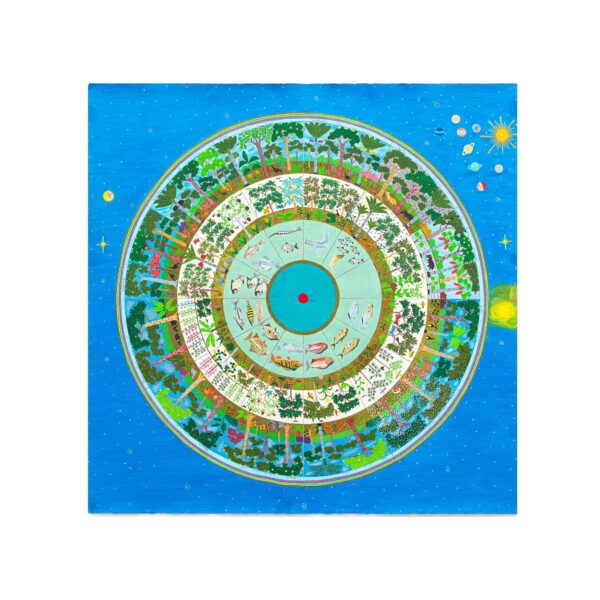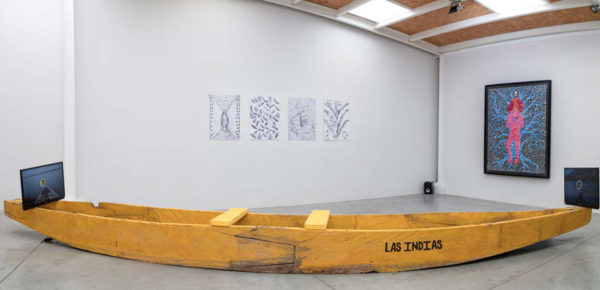
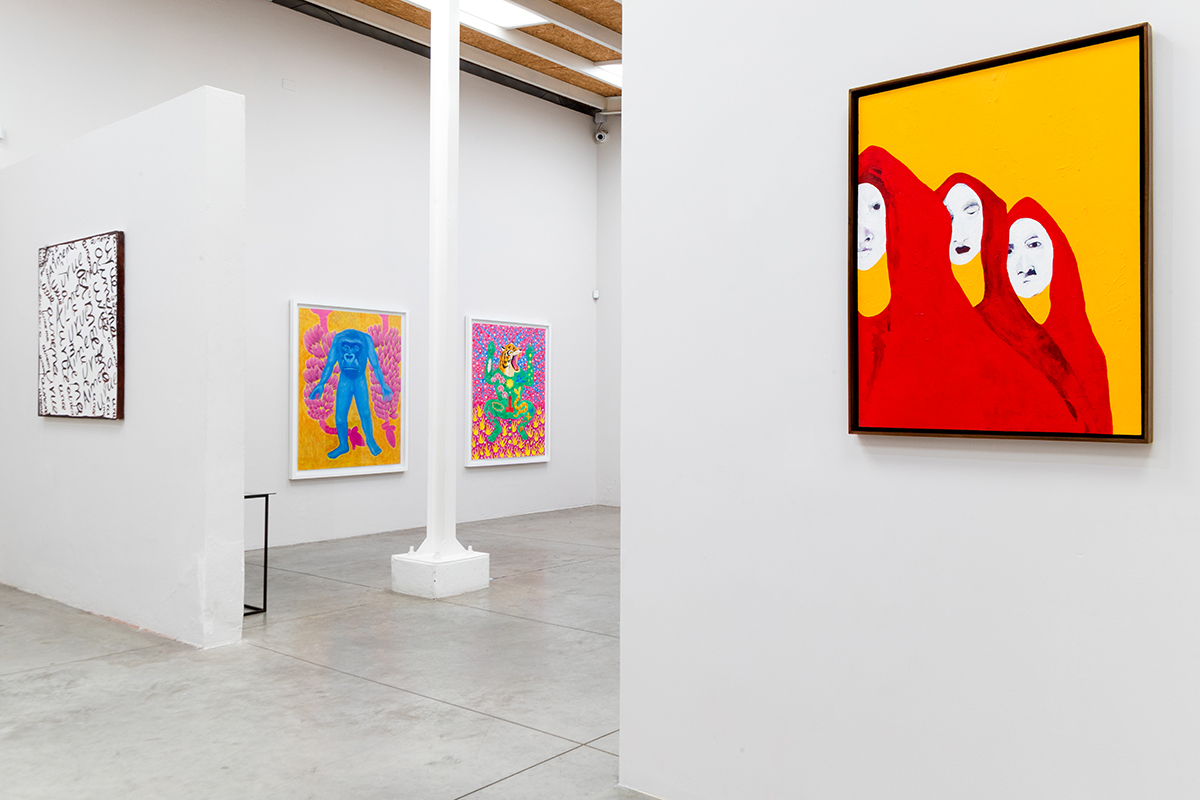
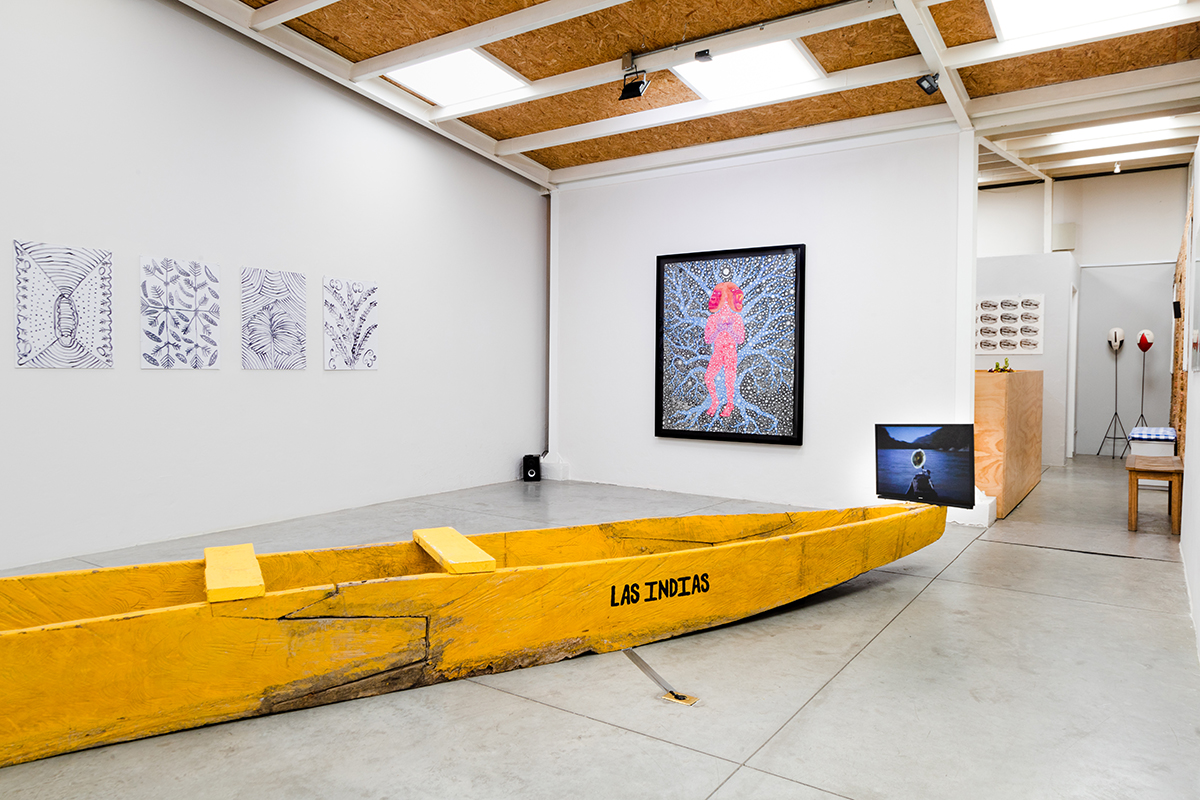
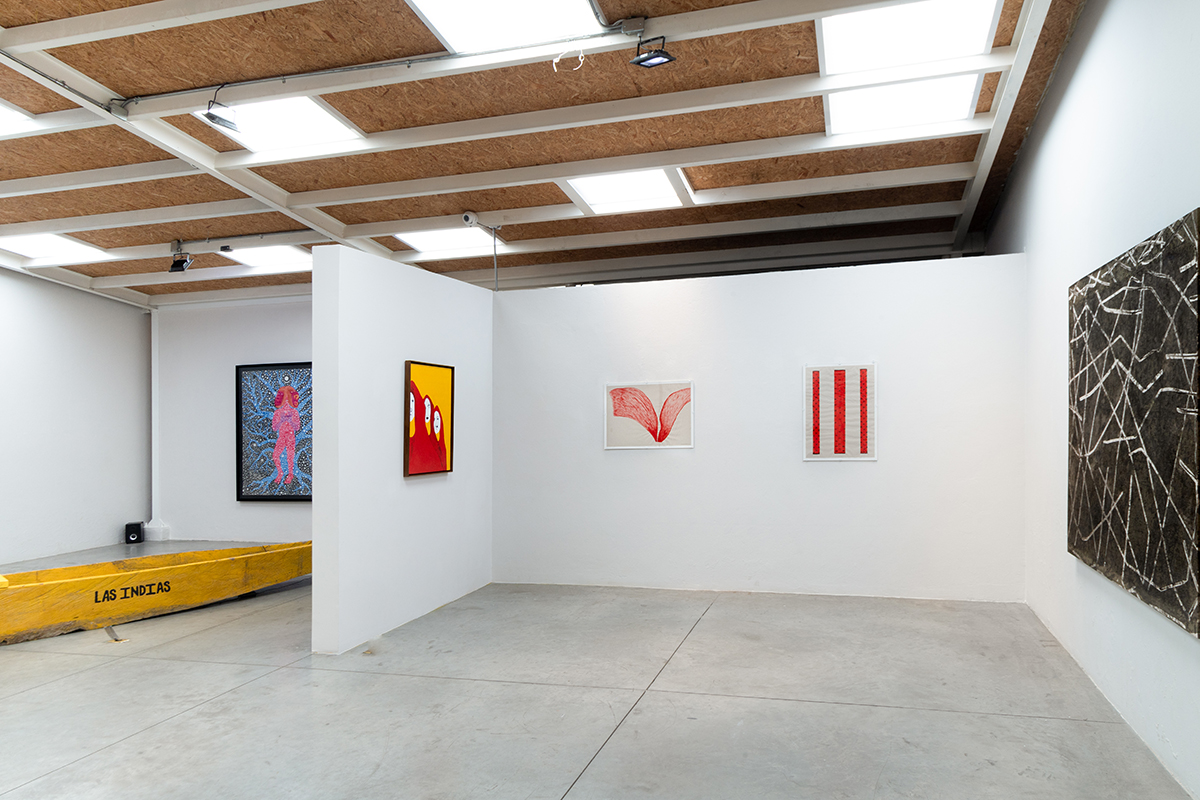
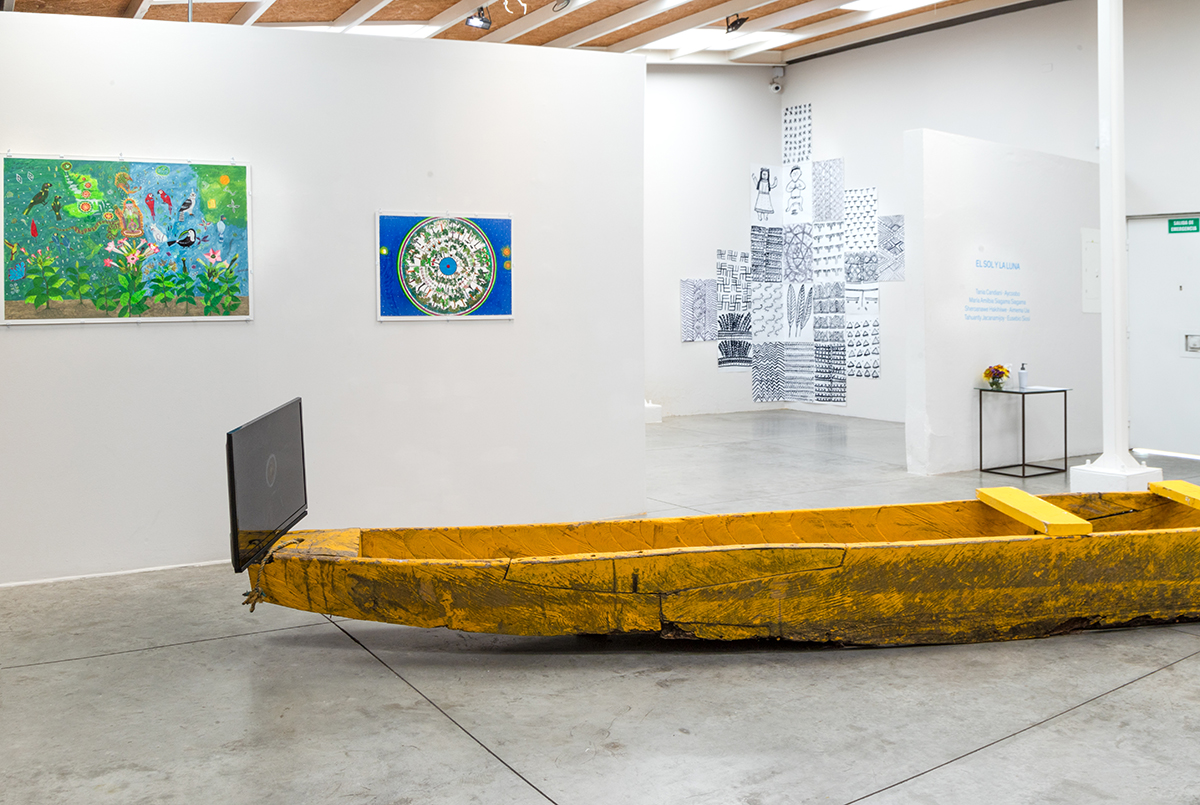
El sol y la luna
The culture of the ancestral peoples does not differentiate between the daily and the sacred, and therefore, between the artistic manifestation and the spiritual reality. The correct relationship between the invisible forces of nature and the proper use of its technologies is essential for the balance that allows the cycle of life and death. The work of ancestral artists, such as María Amilbia, Aycoobo, Tahuanty and Sheroanawe, reflects this worldview and how the transmission of knowledge is done through daily and daily exchange. Through their drawings and iconography, these artists represent the visible and invisible universe and show deep ideas such as balance, temporality and transcendence.
Within the cosmogony and the social ecosystem of the ancestral peoples who survive today, there is no difference between the everyday and the sacred, therefore, neither between artistic manifestation and manifestation of spiritual reality. The balance that makes possible the cycle of life and death depends on the correct relationship between the invisible forces of nature and the proper use of its technologies.
Starting from the idea of the double, the symmetrical and the opposite, which plays a leading role within the founding myths of different pre-colonial cultures, El Sol y la Luna proposes a structure of contrasts in which ideas are put on the table. representation, fantasy, nostalgia and at the same time, very deep metaphysical concepts such as temporality, balance and transcendence.
The opposites, within this sacred logic, and at the same time efficient, communicate and feed. They are not independent forces (as in Western thought that tends to divide) and it is through myths that women, girls and boys, and men in the community learn to mediate between dualities. Although the Sun and the Moon are represented by different and conflicting deities, in their very essence, their existence depends on the other.
María Amilbia, is a woman of wisdom belonging to the Emberá people. His work brings together the necessary iconography to represent the visible and invisible universe. His drawings made with ink and Jagua are sacred forms that make up the vocabulary that nature uses to manifest itself through dreams, poetry and in biology. In her community, she celebrates the rite of birth, her hands are in charge of bringing babies to this reality and in her way of seeing the world, midwifery is a major art.
In the Nonuya culture and in general of all the native peoples, the transmission of knowledge, sciences and arts, is made from the daily and daily exchange. Throughout his life, Aycoobo has been intentionally and methodically receiving knowledge from his father, maestro Abel Rodríguez. His pieces are cosmic and polyphonic maps in which the artist tries to condense very ancient knowledge with contemporary thoughts.
Notions such as logic, sequence and concatenation, are replaced by ideas that are more connected with the poetic universe, such as revelation, synchrony or intuition. These drawings, which are based on the interest and need to portray organic nature, tend to subvert the traditional patterns of representation and lead to hallucinogenic revelations that reveal the invisible architectures of reality.
Dialogue with sacred plants, astrology, and fictional stories are a meeting point in Tahuanty’s work. His drawings expose a multifaceted duality or identity that is constantly changing in the intangible and spiritual world. The body is understood as a cosmic energy that transmutes within a physical space.
Sheroanawe’s drawings, which are based on lines and figures, simple geometries, give an account of a stable moment, of places that remain in constant change and yet do not perish or change. His pieces show the subtlety of the systems in which life and death can simultaneously inhabit a body. His pieces become powerful tools for an abstraction that does not derive from conceptual exercise, but instead from ancestral wisdom that stems from, among other things, the body painting processes carried out by his mother. Its symbols are expressions of identity that have a direct relationship with its physical Aimema, from the Uitoto people, has lived her life in a duality between the Amazon territories and the city of Bogotá. His work starts from the search for his ancestral roots and is through the Mambe, wito, dragos blood, among other natural extracts, which portrays the thoughts and connections that arise in his mind during spiritual processes. His work is a constant investigation of medicinal practices, their ancestors and the history and vision of their territories.
Eusebio Siosi uses the color palette that represents the rites and ceremonies. Red is a transmitter and connector of energies, yellow with the sun and black with earth and wisdom. In this way, Eusebio’s paintings seek to transfer the ritual force of the ceremonies of his community to the pictorial space.
The work of Tania Candiani, in the first instance, questions the canons of representation of the Amazon or the Amazon as aesthetic and moral categories within the cinema. However, in this piece called Las Indias, built from two similar but geographically opposite experiences, it shows how the notions of the East and the West are fictitious constructions made for convenience and established in culture through the centuries.
After all, the north and the south, the opposite and what is contradicted, are determined by the perspective from which you look at them. Today, more than ever, we believe it is essentialto feed our reality with ancestral wisdom that has managed to find balance by giving spiritual and practical meaning to the forces that oppose and complement each other.
Bogotá
Carrera 23 # 76-74
Barrio San Felipe, Bogotá
Tel. +57 (60) 1 3226703
Lunes a Viernes
10:00 am a 05:30 pm


